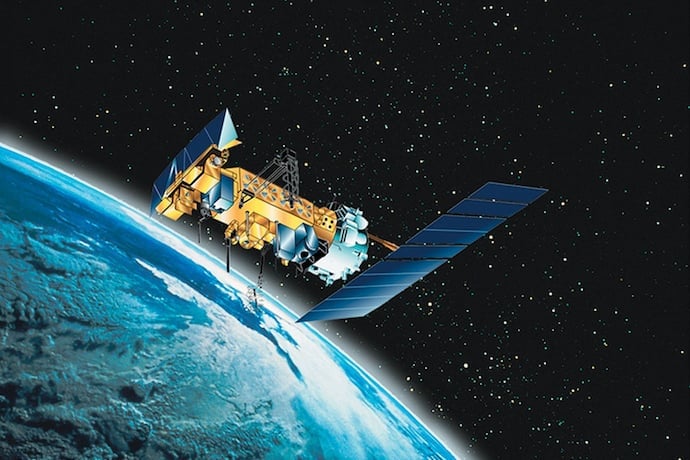There is no gas station in space. No place to pull up the spacecraft, refuel and go on toward Mars.
That is, the celestial gas station won’t open for at least another month, according to Project Expert Susan Breon. And then, the sky, or rather the solar system, is no longer the limit.
“What we’re trying to do has never been done before,” Breon said. “We’re laying a new foundation.”
On December 4, SpaceX launched a Falcon 9 rocket carrying supplies and experiments for the International Space Station. Goddard Space Flight Center’s Robotic Refuel Mission 3 sat snuggly in the unpressurized part of the payload. Once it reaches the space station, RRM3, a washing-machine sized system, will be attached to the outside of the space station.
One of the RRM3’s jobs is to show that, theoretically, rockets can refuel in space. For this test run, the team is working with liquid methane.
Breon, who is an expert in super-cold or cryogenic fuels explained there are two big problems with transferring cryogenic fuels in space. First is heat.
Space is cold, but even that is relative for cryogenic fuels. A little bit of heat from the sun or electronics can cause the liquid methane to boil. So the team had to design a way to shield the storage tank from heat so the fuel doesn’t just boil off.
The next problem is gravity, or lack thereof.
The space station and other spacecraft aren’t really free of Earth’s gravity. They are actually in free-fall around the planet. That is, they are continuously in that moment of the roller coaster when the seat drops away and the passenger rises up. While gravity exists, the people, the machines and the fuel in spacecraft don’t feel it.
So the fuel system cannot work like a water tower, where someone turns on a spigot at the bottom and expects the liquid to come flowing out. Instead the team had to design a selective pressurizing system. When the rocket is hooked up, the storage tank will be pressurized, causing the liquid fuel to move away from the pressure and into the rocket’s tank. For this prototype system, they are not refueling a real rocket, but rather showing that everything works in space.
Another part of RRM3’s job is servicing satellites. Satellites wear out and would benefit from maintenance work. And some of the thousands of orbiting systems were designed to be opened on in space, but many were not. NASA has charmingly named these satellites “cooperative” and “uncooperative,” depending on their build. The RRM3 has many new tools that should safely open even the most uncooperative satellite.
While RRM3 will be orbiting relatively close to Earth, the goal is to make the system transferrable further out into space. Project Manager Jill McGuire said she hopes the system can eventually be used by astronauts who are using jetpacks to tour Mars.
For Breon, the exact placement of the RRM3 isn’t the important part. She said RRM3 is like the invention of an elevator. Without the elevator, she explained, there couldn’t have been skyscrapers. “We’re opening up a new capability for all space flight.”
Learn More
Robotic Refueling Mission NASA facts and many sets of press releases
https://www.nasa.gov/mission_pages/station/research/experiments/explorer/Investigation.html?#id=1787
https://www.nasa.gov/mission_pages/station/research/news/spx16-research
https://www.nasa.gov/mission_pages/station/research/news/rrm3
Press Conference Kennedy Space Flight Center December 4, 2018 Jill McGuire (Broadcast on NASA TV)
https://www.nasa.gov/sites/default/files/files/issrdc_2013-07-17-1600_mcguire2013.pdf

